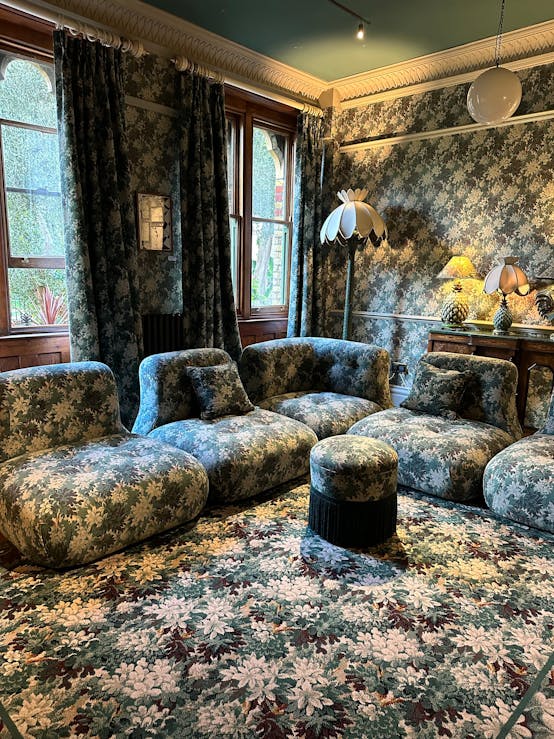Key Principles for Blending Modern and Traditional Styles in UK Homes
Blending styles in UK home design demands a thoughtful approach to create spaces that feel cohesive yet dynamic. The core principle is achieving a harmonious balance between the sleek simplicity of modern elements and the rich character found in traditional interiors. This balance ensures neither style overwhelms the other, allowing both to coexist beautifully.
A vital component is maintaining proportion. Modern designs often emphasize clean lines and open spaces, while traditional styles incorporate ornate details and layered textures. Carefully selecting the scale and weight of furnishings and finishes helps preserve a visual equilibrium. For example, pairing a streamlined sofa with a classic wooden coffee table can anchor the room without creating dissonance.
Also to read : How Can Small Changes in Home Decor Impact the Ambiance of Your UK Space?
Understanding the core characteristics of each style is essential. Modern interiors typically feature minimal ornamentation, neutral palettes, and functional forms. In contrast, traditional interiors celebrate decorative moldings, rich fabrics, and heritage-inspired patterns. Blending these means respecting the integrity of both while allowing key elements, such as a statement chandelier or textured wallpaper, to bridge the gap. Practical application might include using modern materials with traditional shapes or vice versa, enhancing the overall design narrative of the UK home.
Effective blending also considers the personality and lifestyle of the homeowner, ensuring modern traditional interiors feel inviting and authentic rather than forced or contrived.
Also to discover : How Can UK Home Décor Evolve in the Next Five Years?
Assessing Your Space: UK Period Features and Modern Potential
When working with period property features in UK interiors, the first step is to identify and appreciate the architectural details that define the character of your home. Typical period characteristics may include intricate cornices, sash windows, original fireplaces, and ornate ceiling roses. These details not only tell a story but also add unique charm that modern homes often lack.
To thoughtfully integrate styles, consider which original features to preserve as focal points and which areas could benefit from modern upgrades. For example, retaining a Victorian fireplace while updating the lighting and flooring can create a harmonious blend of old and new. This balance ensures the home respects its history while meeting contemporary needs.
Highlighting these features alongside new elements involves careful evaluation of the space’s potential. Natural light, room proportions, and existing structural conditions influence how successfully modern styles can be integrated without overpowering period details. With informed choices, you can transform a period property into a stylish, functional home that celebrates its heritage.
Actionable Tips for Furnishings and Decor Choices
Blending furniture mixing effectively is key when aiming to combine modern traditional decor. Start by layering contemporary furniture with classic statement pieces to create a balanced yet dynamic living space. For example, pairing a sleek, minimalist sofa with an ornate antique coffee table offers contrast while maintaining harmony. This technique brings together the best of both worlds: modern simplicity and timeless elegance.
Textiles, patterns, and accessories provide essential tools to bridge the gap between styles. Use patterned cushions or rugs that incorporate both traditional motifs and modern color palettes. Mixing soft furnishings like velvet throws with geometric prints can seamlessly unite the aesthetic, making your room feel cohesive without being overly matchy.
UK interior ideas often showcase this fusion. Many homes in Britain feature blends such as a mid-century modern chair next to a Victorian fireplace, or contemporary lighting fixtures enhancing a period home’s character. Emulating these examples can inspire your own space to balance heritage with trend, highlighting your personal taste while respecting architectural context.
Colour Palettes for Harmonious Modern-Traditional Spaces
Choosing the right colour schemes is crucial when blending modern and traditional elements in UK home design. A thoughtful palette can unify contrasting styles, creating a balanced and inviting environment.
Start with a base of neutral colours such as soft greys, warm beiges, or creamy whites. These shades provide a versatile foundation that complements both contemporary and classic furnishings. Introducing accent colours in muted tones like sage green, dusty blue, or rich terracotta brings depth and personality without overwhelming the space.
UK home design often draws inspiration from natural surroundings and historic interiors. For instance, combining muted greens and soft blues—common in English countryside homes—with modern materials like matte finishes can enhance cohesion. Wallpaper featuring subtle patterns or textured paint can bridge the gap between eras, adding tactile interest while maintaining harmony.
Using consistent finishes across walls, cabinetry, and trim helps tie together the blended palette. For example, a matte paint finish on walls paired with satin woodwork can subtly highlight architectural details without clashing with sleek modern lines. This approach ensures the colour palette remains cohesive throughout, reinforcing the home’s unified aesthetic.
By thoughtfully selecting and applying colour schemes tailored for UK homes, blending palettes becomes a strategic tool to connect modern and traditional styles beautifully.
Step-by-Step Room Transformation Strategies
Transforming a room in your home begins with a clear, sequential approach. Start by assessing the space’s current function and identifying the main areas or zones you want to enhance. For example, in a typical UK living room, you might zone seating, entertainment, and storage areas. This zoning creates a foundation for purposeful design, helping each section serve its intended role while contributing to the overall flow.
Next, focus on layering styles to blend different influences seamlessly. If you love traditional British interiors but want a modern touch, start by anchoring the room with classic furniture pieces. Then add contemporary accessories and textiles that complement the base styles without overwhelming them. Blending styles UK homeowners appreciate often involves mixing warm wooden elements with sleek metals or minimalistic lines—achieving harmony between old and new.
Maintaining cohesiveness across the home is key. Use a consistent color palette or recurring design motifs throughout your rooms to unify the space without making everything feel identical. For instance, a shared set of accent colors or coordinating patterns repeated in cushions, curtains, and rugs can tie disparate rooms into a coherent whole. This approach allows for individual room character while preserving an inviting, integrated home atmosphere.
By following these room makeovers basics—zoning, layering styles, and ensuring cohesiveness—you can create a practical home design that feels both personalized and thoughtfully curated.


